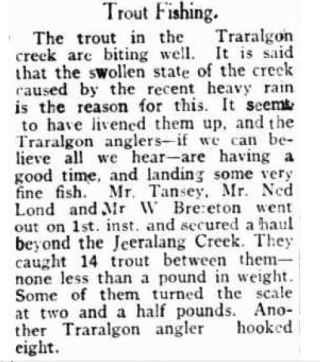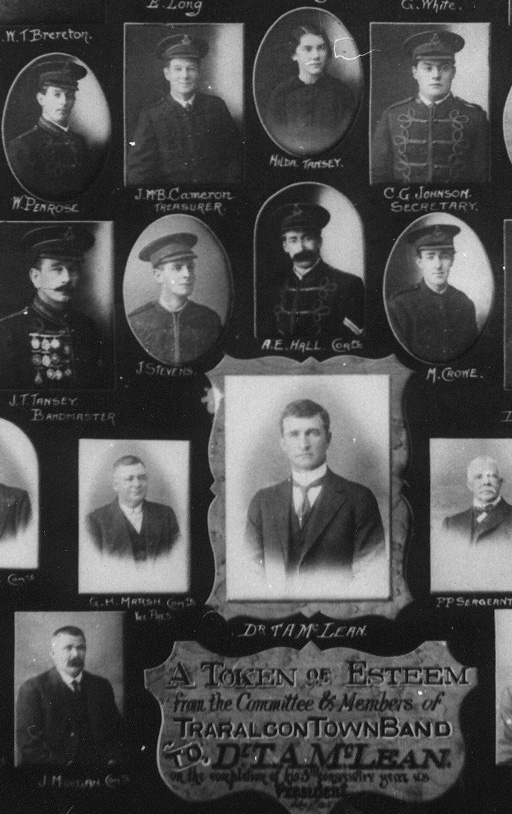Note: Before starting I want to say that I mostly use the spelling Bismark but many sources say Bismarck or say that one is the synonym if the other,
And now for a different kind of Family History Tree, My great-grandfather Freidrich Eberhardt Fricke emigrated from the village of Gros Mahner in Hannover. He became a farmer at Carisbrook in Central Victoria.
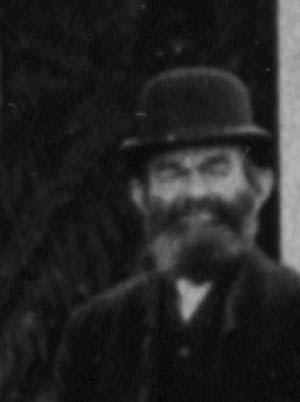
Freidrich Eberhardt Fricke
One day on the goldfields at nearby Harrison’s Hill he found an apple core which he took home and planted the seeds which grew into a beautiful apple tree with very large apples and he called it the Bismark Seedling Apple.
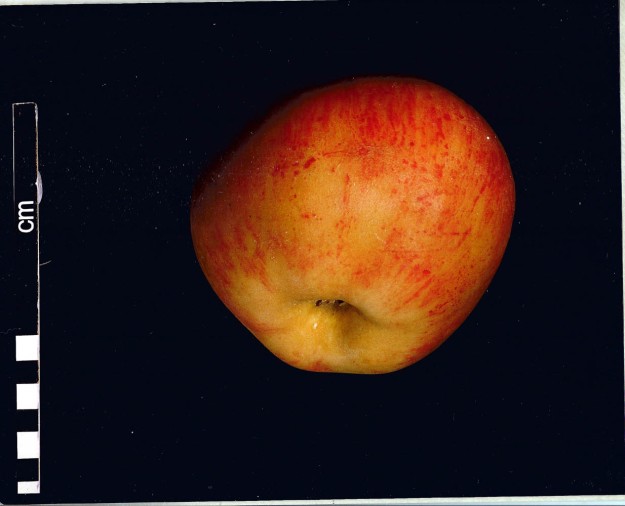
Wax model in the Museum of Victoria made in 1875 from an apple grown on F.E.Fricke’s Bismark apple tree
My first port of call was in 1985 at the Museum of Melbourne and this is a wax model of one of Mr Fricke’s apples which he sent to the Museum in 1875 Just look at the size of it. It is described as “a winter fruiting, cooking apple and is a very large, yellow-skinned apple with just a slight red blush. It appears to be about eight times the volume of a Golden Delicious apple. It was used for cooking and export.” (See Note 1)
On page 245 of “Victoria and its Metropolis – Past and Present”, Vol 11,published in 1888 it says ” The celebrated Bismark apple, a seedling, was first grown in Mr. Fricke’s garden; the tree is twenty-five years old and its fruit is shown in the Melbourne Museum “.
And a newspaper obituary notice dated Oct 6th, 1899, believed to be from a Maryborough paper, says – “One day he picked up on the diggings an apple core which he took home and planted. The seedling which grew was never grafted but it produced a magnificent apple, which in honor of the late Prince Bismark, was given the name under which it is now known. ”
To add to these facts which I discovered last century 🙂 I can now add this newspaper article from 1893 which I found recently. An overseas news column in the Australasian told about London’s Great Crystal Palace National Co-operative Vegetable, Fruit and Flower Show then it went on to tell how the Curator of the Royal Horticultural Gardens in Victoria had written to The Journal of Horticulture in England with information about the Bismarck Apple. (See note 2) This is as close as I can get to F,Fricke writing the letter himself.
 .Due to the wonders of the internet I was able to look through the 1893 publications of the Journal mentioned but cannot find that the information Mr Neilson gave them about the origins of the apple was passed on to the members of the Society.
.Due to the wonders of the internet I was able to look through the 1893 publications of the Journal mentioned but cannot find that the information Mr Neilson gave them about the origins of the apple was passed on to the members of the Society.
These days if you go to Google for information on the Bismark/Bismarck apple you can’t really find anyone willing to commit as to the origins of the apple. They give you the choice of New Zealand or Tasmania or Clarkson of Carisbrook or Fricke of Carisbrook. Remember the childhood game of passing a whispered message down a line of people and how the message would get distorted. And so it goes on in Google. Nowhere can I find any mention of someone in Tasmania or New Zealand actually growing the first tree. Just speculation, speculation.
c1863 F.E.Fricke grew the first Bismark apple tree from either a seed or a seedling found on the Harrison Hill diggings near his farm.
Mr Benjamin Clarkson, a nurseryman, later got cuttings from the tree so that he could graft them and raise trees for sale.
1873 Mr Clarkson took apples from his grafted tree to the Seedling Fruit Committee of the Horticultural Society of Victoria who officially named it Prince Bismark.
1875 F.E.Fricke gave one of his Bismarck apples to the Museum of Victoria so that a wax model could be made.
I plodded away on this story before internet information was available. I couldn’t find a living tree. But in 1993 after appealing through a newspaper I found one in Central Victoria, about 38 km south-west of Carisbrook, a 50 year old tree which was a direct descendant of F.E.Fricke’s tree and I was able to get some sample fruit and take some photos.

Descendants of the original Bismark apple tree as seen in 1993
then like my great grandfather I sent some to the museum.
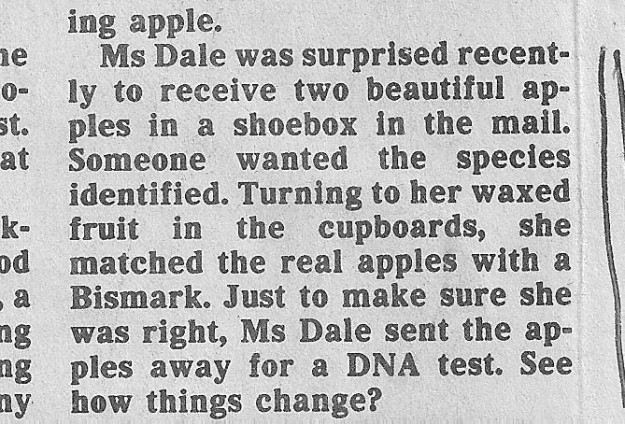
Melbourne Age, 16 Aug 1993
This was from an article in the Melbourne Age by John Lahey titled “Images of Forgotten Fruit”. and showing Liza Dale with some of the wax models.
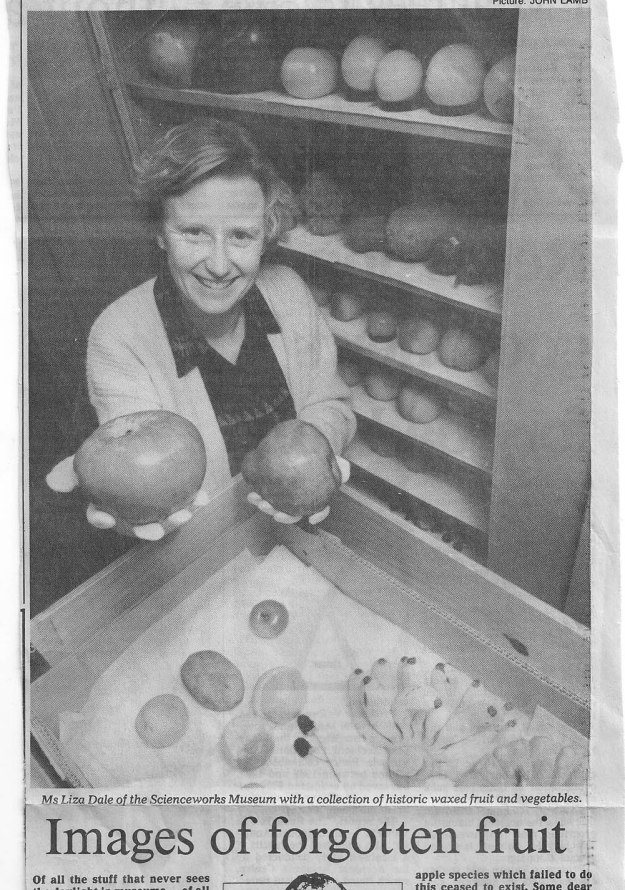
From article by John Lahey on Images of Forgotten Fruit in the Melbourne Age, 16 Aug, 1993.
Are there two different Bismark Apples ?
In these photos I have moved copies of the scales onto the apples.

Bismark Apple from F, Fricke

Bismarck Apple from National Fruit Collection, UK
1. On the left is the present photo of the Fricke Apple on the Museum of Victoria website. The scale 2 cm per block, making the apple nearly 130 mm wide. The Museum say 1230 mm
2. On the right is a photo from The National Fruit Collection in the UK showing a Bismarck apple at a scale of 1 cm per block (It has 5 cm written at the end of the 5 blocks) making the apple nearly 90 mm wide. Their notes say 92 cm wide.
3. From John Bultitude: Apples, A Guide In 1992 Burnley to the Identification of International Varieties, 1983, MacMillan Press Ltd, London
79 mm wide and 67 mm high
Surely two different apples. This question is also asked in the Apple Database of the Heritage and Rare Fruit Network This was brought up in an interesting correspondence with Neil Barraclough in those early days of research.
It now needs some unbiased person with the right botanical and research skills, and the time, to try and solve the question of the origins of this Bismark apple and hopefully give F.E.Fricke his five minutes of fame as the person who first grew the tree, followed by Clarkson as the first person to then propagate it for sale.
Note 1 : I have nothing but praise for the sharing nature of the people at the Museum of Victoria, in particular for the Information supplied in 1985 by M.L.Hallet, then Curator of Rural Science, Museum of Victoria and in 1993 by Liza Dale, then Curator of Primary Production in the Scienceworks section of the museum.
Note 2. The Australasian (Melbourne, Vic. : 1864 – 1946), Saturday 7 October 1893, page 11, Notes from Other Lands
Links:
The National Fruit Collection – Bismarck
The Museum of Victoria – Bismark
The Heritage and Rare Fruit Network
This week Sepia Saturday let us choose for ourselves what we would like to write about. So while I had been waiting for fruit, apples, food, eating, enormous things, mysteries or wax models to be given us as a theme, now I have to wait no longer and can wax to my heart’s content about wax models in this week’s post. In the meantime I hope we are never given fruit, apples, food, eating, enormous things, mysteries or wax models as our theme as I have no other photos which would fit the bill.
Now it’s time to see what other Sepian Saturday members have found in their un-themable collections as shown in the links at Sepia Saturday.
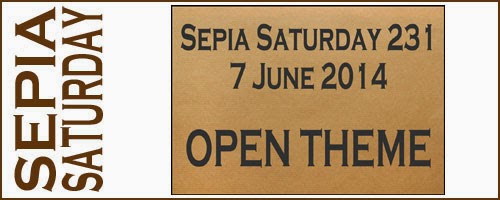
 How can we possibly live up to our theme photo of this week. It is just about perfect Let’s just look at it., A group of four young ladies being very daring and raising their skirts so that they could paddle in the lake. And the two young boys tagging along. Can’t you just hear one of the mothers saying You can’t go walking unless you take Billy and Johnny with you. And there are the boys, not quite a part of the group but on the periphery.
How can we possibly live up to our theme photo of this week. It is just about perfect Let’s just look at it., A group of four young ladies being very daring and raising their skirts so that they could paddle in the lake. And the two young boys tagging along. Can’t you just hear one of the mothers saying You can’t go walking unless you take Billy and Johnny with you. And there are the boys, not quite a part of the group but on the periphery. A grandmother doing supervision duty on an empty beach.
A grandmother doing supervision duty on an empty beach.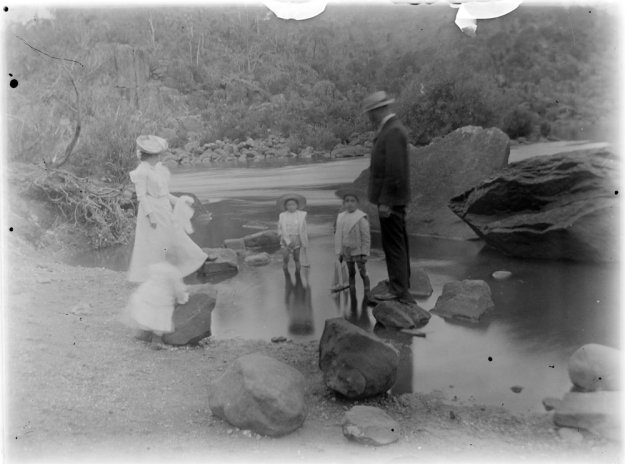 And closer to home, the sea water Paddling Pool in front of the enclosed swimming area at Eastern Beach in Geelong.This photo from the State Library of Victoria was taken about 1949.
And closer to home, the sea water Paddling Pool in front of the enclosed swimming area at Eastern Beach in Geelong.This photo from the State Library of Victoria was taken about 1949.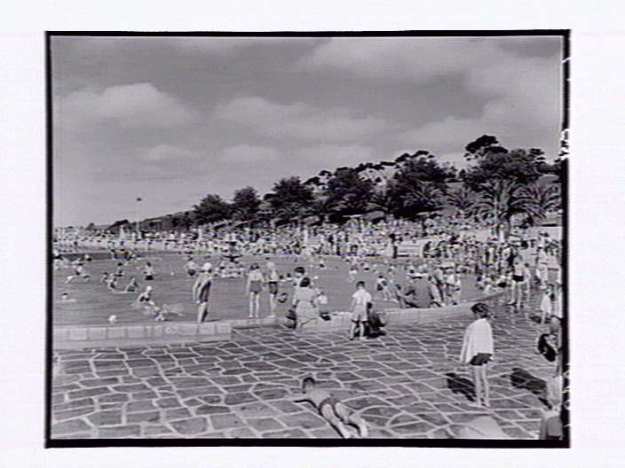 Water is not the only medium which makes for fun paddling, and hands are good for paddling in mud too. – Melbourne 1962
Water is not the only medium which makes for fun paddling, and hands are good for paddling in mud too. – Melbourne 1962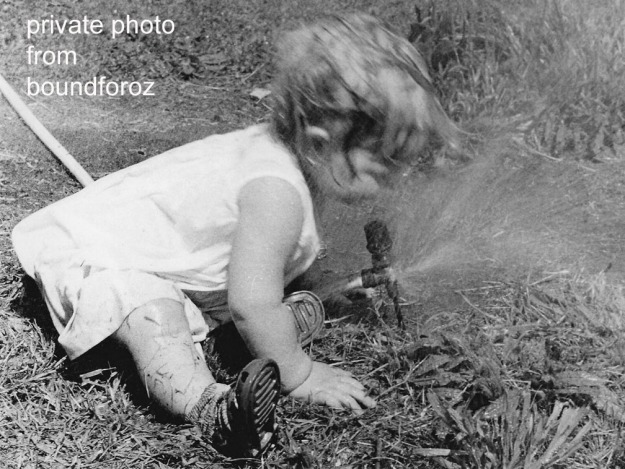
 These are the photos which have sprung to my mind when looking at this week’s theme photo for Sepia Saturday. Other people have contributed different photos and they can be found through the links on Sepia Saturday
These are the photos which have sprung to my mind when looking at this week’s theme photo for Sepia Saturday. Other people have contributed different photos and they can be found through the links on Sepia Saturday
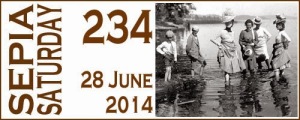
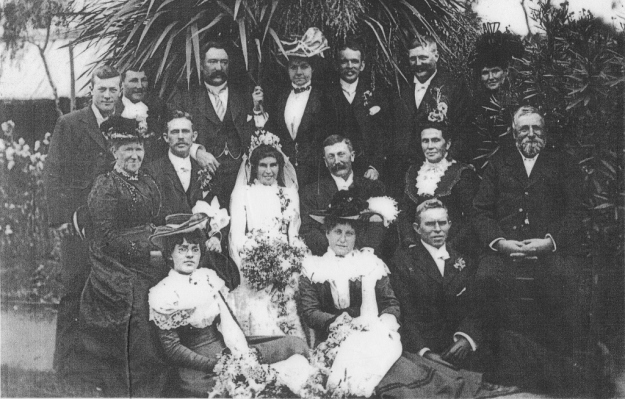




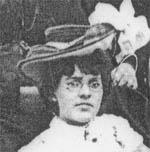





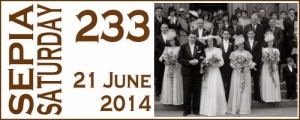
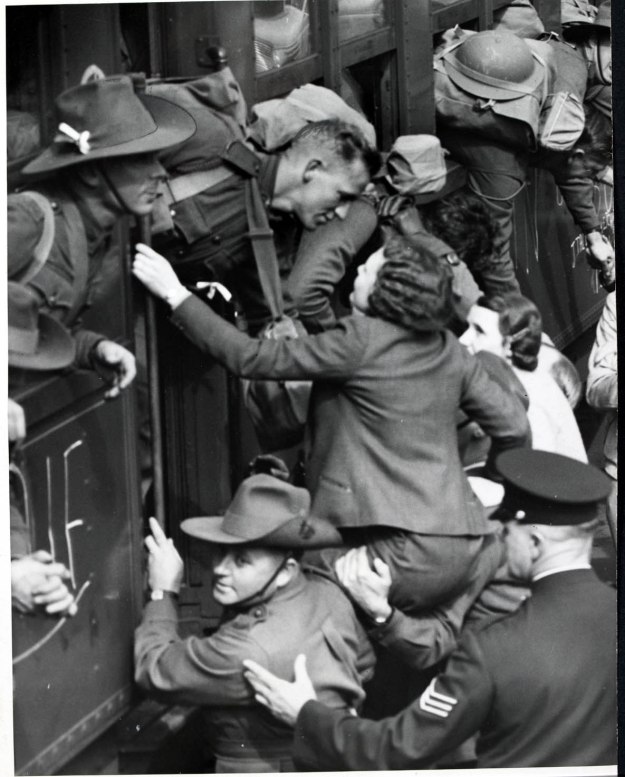
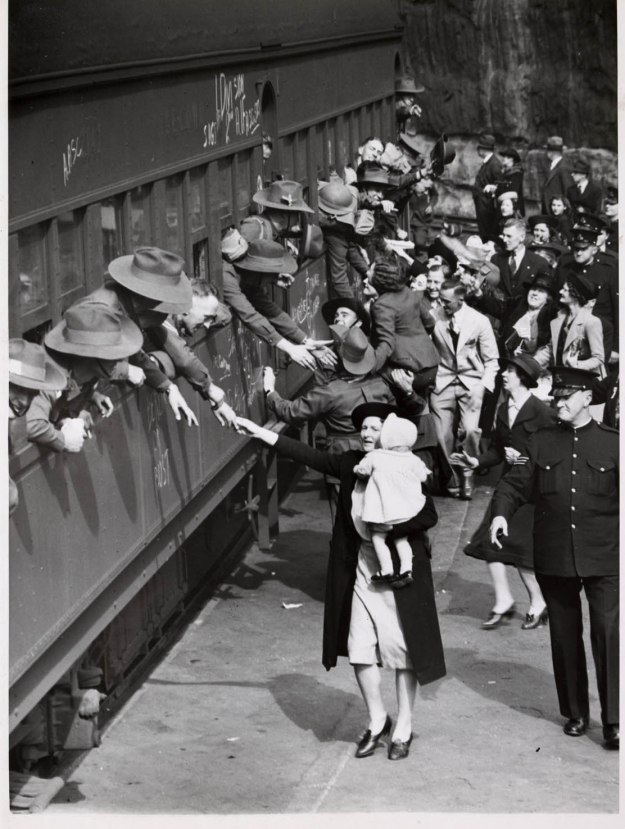
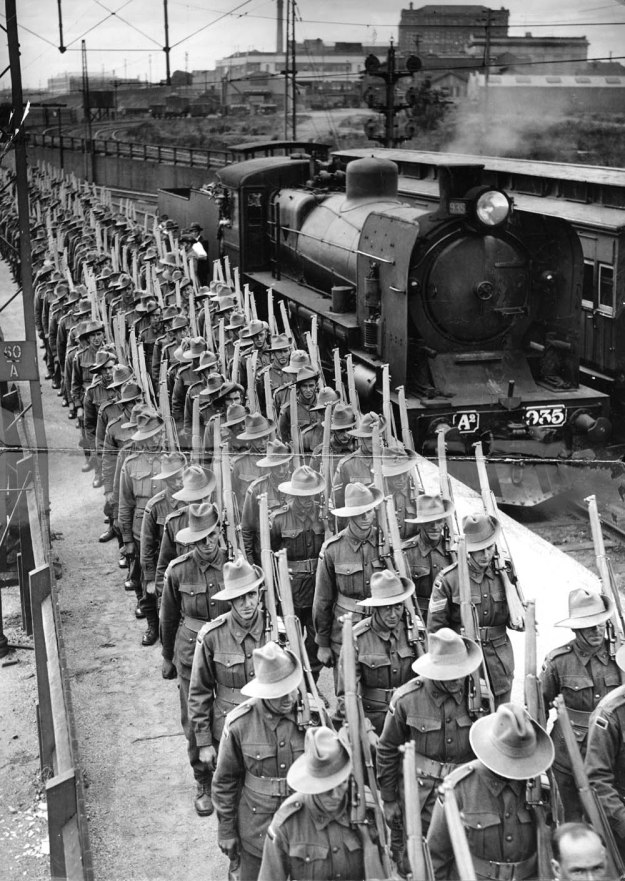
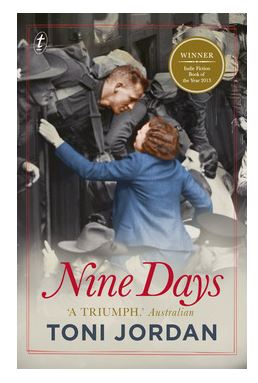

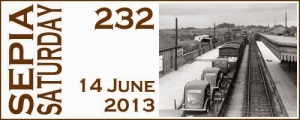


 .
.








